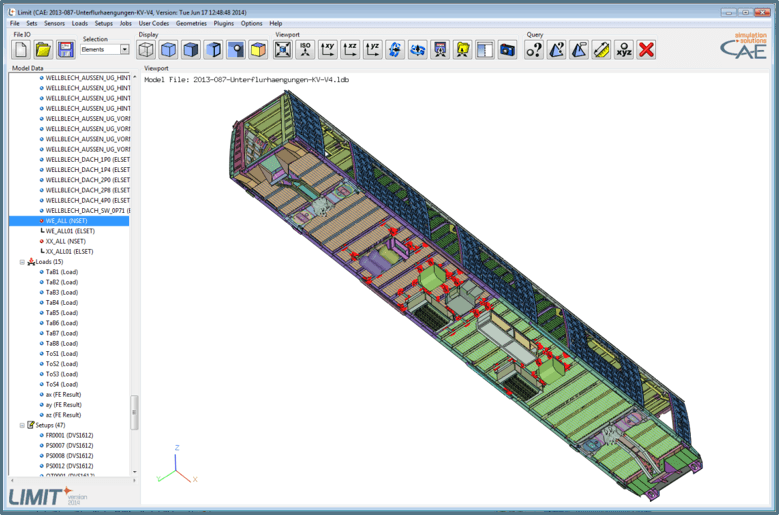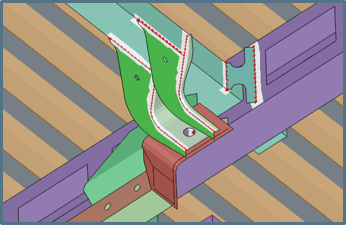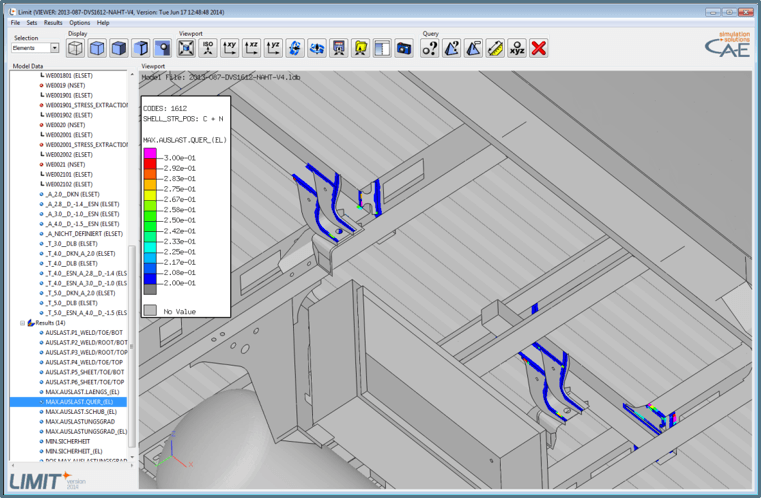Introduction:
For the certification of railway vehicles such as metros, detailed strength assessments are necessary. In particular, the fatigue strength assessment of all welds is mandatory. A widely used design code for these assessments is the DVS1612. In the example below, the task was to perform a static and fatigue strength assessments of the underfloor equipment brackets.
Challenge:
In order to calculate accurate loading conditions for each bracket, the complete elastic car body structure was taken into account. The different underfloor equipment components were also included with their stiffness and mass. The large number of load cases for the static and fatigue assessment generated lots of stress data, even though the project used only shell elements. For the iterative optimization process LIMIT® ensured a fast and efficient assessment, making use of regeneration features of welds after model changes.

Advantages of using LIMIT:
- Fast and simple identification of welds based on shell property information and part information
- Definition of weld quality based on topology information
- Simple modification of individual welds with parameters differing from default settings
- Conforming to standard assessment using the DVS1612
- High efficiency in iterative optimization including changes of the model
- Automated report generation including all model parameters and results



